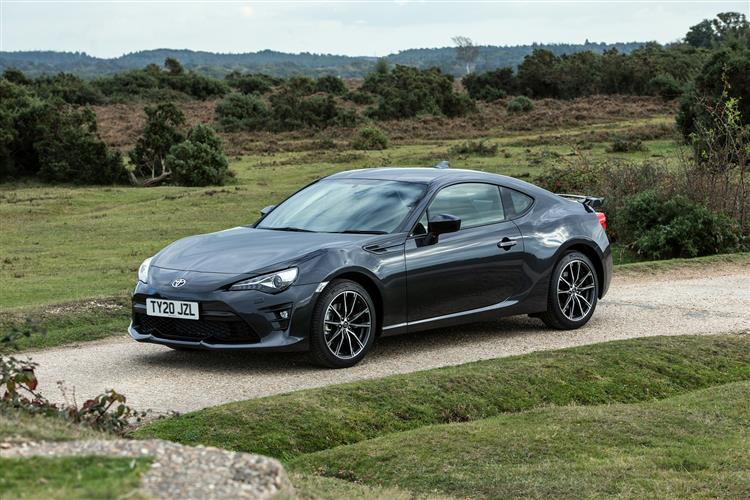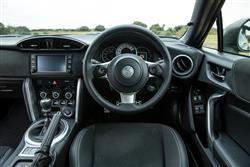How will you view?
This is a sample, showing 30 seconds of each section.
SERIOUSLY SPORTY (some text hidden) SECTIONED_new_toyotagt86_2017
By Jonathan Crouch
Introductionword count: 104
If you thought involving affordable sportscars belonged back in history, then you'll find Toyota's GT86 a welcome breath of fresh air. The car was first launched in 2013, but we'd suggest you try and stretch to the facelifted version we examine here, introduced in 2016. This facelifted model wasn't any faster than the original but the suspension was stiffer, the steering was sharper and the car was made a little smarter, both inside and out. Otherwise, things were as before. Developed and desired by enthusiasts, the GT86 remains a benchmark in the compact coupe sector from its era, a master class in driving dynamics.
Modelsword count: 13
3 dr Coupe [2.0] - (standard, PrO, CLUB SERIES BLUE EDITION, ORANGE EDITION)
Historyword count: 259
They knew what sportscars were back in the Fifties. Not a lot of power. Not a lot of grip. And an awful lot of fun. If you see that as the classic automotive era, then it may be that you're not completely up to date with the quality of performance machines you'll find in the time you live in. Some of them are supercars - but not all. Here, for example, is a classic-in-the-making you might very well be able to out on your own driveway. It's name? Toyota's GT86. For too long, enthusiasts have believed what the car makers have told them. That they needed more power, more grip, more fancy intervening electronics. It all looked good on paper but was often curiously unsatisfying out on the road. Time to go back to basics - which is exactly what Toyota did with this car, the 'Hachiroku', which translates as 'Eight, Six' in Japanese. Four factors governed its development: light weight, modest normally aspirated power, rear wheel drive and narrow tyres. Lap times are unimportant. What matters is driving enjoyment and you might have forgotten just how much of a heritage affordable Toyota sportscars have in providing that, from the tiny S800 of 1962 to the GT2000 late that decade, the Celica of the '70's and the mid-engined MR2 of the '80's and '90's. After that, Toyota didn't offer enthusiasts very much, until this GT86 came along in 2013. The car was facelifted in 2016 and it's that updated model we're looking at here which sold until late 2020.
What You Getword count: 346
At first glance, you might wonder what all the fuss is about. The styling, which didn't change much with this revised model, is smart but hardly show-stopping, with classic front engine / rear drive proportions delivering a long bonnet and a rear-set cabin. It was all little changed from the prototype that preceded this GT86 model's original launch, the FT-86 show car that Toyota unveiled at the 2011 Geneva Motor Show twelve months before production started at Subaru's Gunma plant in Japan. There, GT86 models rolled down the same production lines as their all-but-identical Subaru BRZ counterparts, the only real visual difference between the two cars being the trapezoidal front grille section on this Toyota model. That's part of a front end that featured a sharper look with this revised post-2016-era model, with smarter headlight units that created a stronger horizontal emphasis. And inside? Well in this improved model, the instrument panel got a one-piece design with a black finish and slicker carbon-fibre-pattern detailing. It was all part of an enhanced cockpit that was revised to create what Toyota hoped was a more 'connected feel' between driver and car. Central to this is the smarter three-spoke steering wheel, the smallest yet designed for a production Toyota with a cross-section apparently precision-calculated to provide the best possible grip and feel. A 4.2-inch TFT multi-information display was added as part of the revised model changes in the instrument binnacle's triple-dial arrangement, with a switchable menu that provides the usual journey distance and fuel economy information, plus more performance-focused data, such as power and torque curves, a stopwatch and a G-force monitor. It's a 2+2, so you get tiny rear seats that motoring journalists without small children usually moan about but we find really useful, if only for slinging your jacket on to. And there's a reasonably-sized boot - or at least it is once you fold the back seats down to extend the standard 243-litre capacity to a space so usable that it'll accommodate a trolley jack and four replacement wheels and tyres. Ideal for trackday types then.
To see the full road test text contact us on 0330 0020 227
Pictures (high res disabled)

.jpg)
|
.jpg)
|
.jpg)
| |||
.jpg)
|
.jpg)
|
.jpg)
| |||
.jpg)
|

|
Scoring (subset of scores)
Category: Sporting Cars
| Performance | |
| Handling | |
| Comfort | |
| Space | |
| Styling, Build, Value, Equipment, Depreciation, Handling, Insurance and Total scores are available with our full data feed. | |



